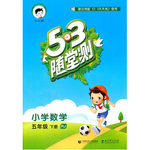题目内容
【题目】Pango was a village in India. The people were poor. However, they were not unhappy. After all, their forefathers had lived in the same way for centuries.
Then one day, some visitors from the city arrived. They told the villagers there were some people elsewhere who liked to eat frog’s legs. However, they did not have enough frogs of their own, and so they wanted to buy frogs from other places.
This seemed like money for nothing. There were millions of frogs in the fields around, and they were no use to the villagers. All they had to do was catch them. Agreement was reached, and the children were sent into the fields to catch frogs. Every week a truck arrived to collect the catch and hand over the money. For the first time, the people were able to dream of a better future. But the dream didn’t last long.
The change was hardly noticed at first, but it seemed as if the crops were not doing so well. More worrying was that the children fell ill more often, and, there seemed to be more insects around lately.
The villagers decided that they couldn’t just wait to see the crops failing and the children getting weak. They would have to use the money earned to buy pesticides (杀虫剂)and medicines. Soon there was no money left.
Then the people realized what was happening. It was the frog. They hadn’t been useless. They had been doing an important job—eating insects. Now with so many frogs killed, the insects were increasing more rapidly. They were damaging the crops and spreading diseases.
Now, the people are still poor. But in the evenings they sit in the village square and listen to sounds of insects and frogs. These sounds of the night now have a much deeper meaning.
【1】From Paragraph 1 we learn that the villagers ________.
A. worked very hard for centuries
B. dreamed of having a better life
C. were poor but somewhat content
D. lived a different life from their forefathers
【2】Why did the villagers agree to sell frogs?
A. The frogs were easy money.
B. They needed money to buy visitors.
C. They wanted to please the visitors.
D. The frogs made too much noise.
【3】What might be the cause of the children’s sickness?
A. The crops didn’t do well.
B. There were too many insects.
C. The visitors brought in diseases.
D. The pesticides were overused.
【4】What can we infer from the last sentence of the text?
A. Happiness comes from peaceful life in the country.
B. Health is more important than money.
C. The harmony between man and nature is important.
D. Good old days will never be forgotten.
【答案】
【1】C
【2】A
【3】B
【4】C
【解析】
试题分析:本文讲述了印度一个村庄过度捕捉青蛙出去售卖而破坏了大自然平衡的故事,告诉我们要保护生态多样性。
【1】C细节理解题。根据短文第一段The people were poor. However, they were not unhappy.可知那里的人民是贫穷的,但是感到满足,故选C。
【2】A细节理解题。根据This seemed like money for nothing. There were millions of frogs in the fields around, and they were no use to the villagers. 可知因为青蛙很容易抓并且对村民们来说也没用,卖青蛙很容易赚钱,故选A。
【3】B细节理解题。根据短文More worrying was that the children fell ill more often, and, there seemed to be more insects around lately.可知这是因为害虫太多了,孩子容易受到感染,故选B。
【4】C推理判断题。根据短文Now, the people are still poor. But in the evenings they sit in the village square and listen to sounds of insects and frogs. These sounds of the night now have a much deeper meaning. 可知人与自然要和谐相处,不能破坏大自然的生态多样性,不然受到损害的还是人类自己,故选C。

 53随堂测系列答案
53随堂测系列答案